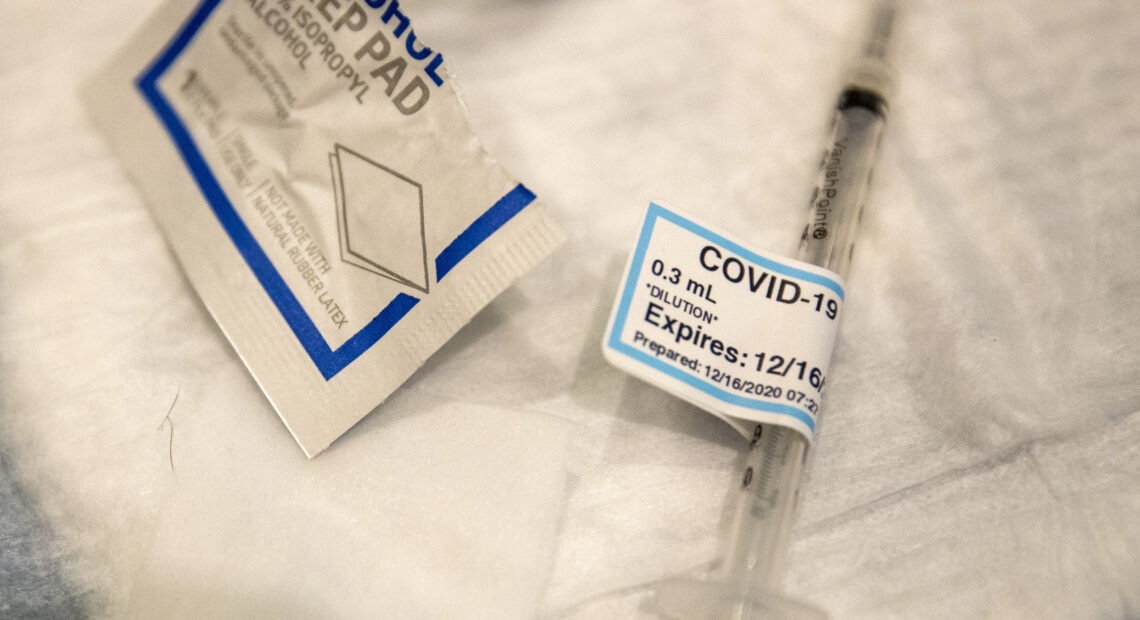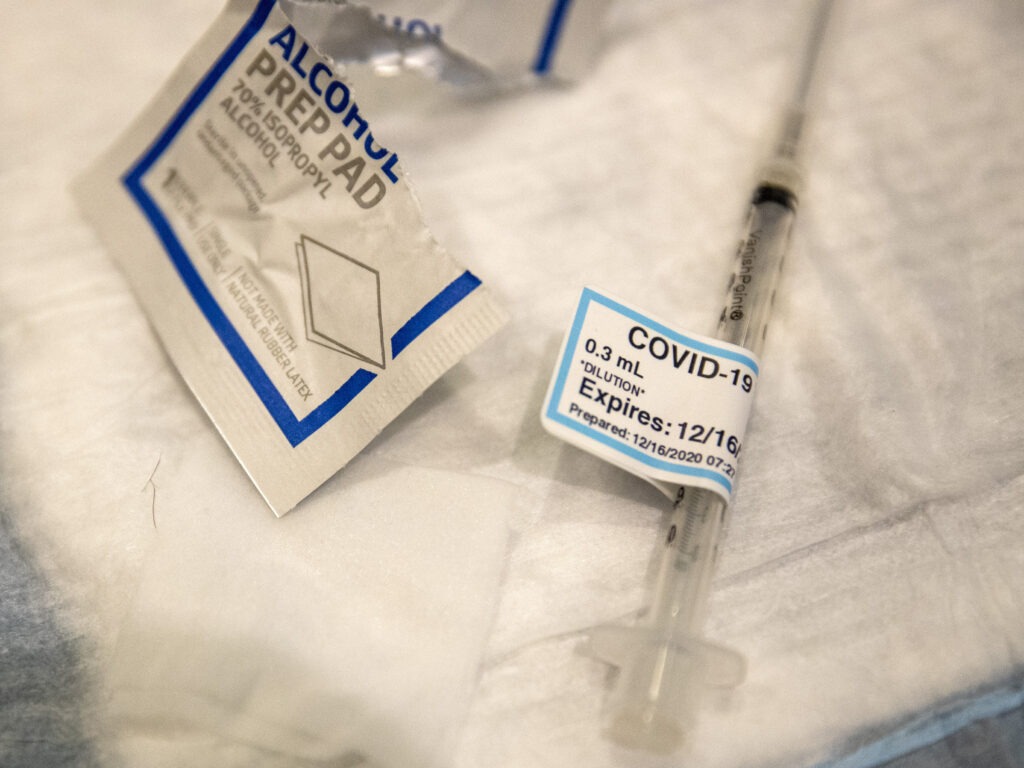
‘This Is An Exciting Thing.’ For Frontline Workers, Vaccine Comes As A Massive Relief
LISTEN
BY WILL STONE
Tens of thousands of health care workers in cities and states all over the country got their first doses of the new Pfizer coronavirus vaccine this past week — a monumental undertaking both scientifically and logistically — and more than seven million doses of the Pfizer and newly-authorized Moderna vaccine are being shipped out this coming week.
The process has faced some bumps, as states learned unexpectedly their allocation would be smaller than anticipated. But the arrival of the initial shipments still came as a huge relief to those who’ve been caring for COVID-19 patients since the early days of the pandemic.
“A lot of us are tired, and this is an exciting thing to be able to have,” says Rebecca Engberg, an ICU nurse at Seattle’s Children’s Hospital. “Hopefully it’s the first step forward to trying to get things back to normal.”
Engberg was among the health care workers to get her shot at the hospital’s vaccine clinic this past week. She’s cared for COVID-19 patients and shares the exhaustion of so many other health care workers.

An empty syringe on a table at Ronald Reagan UCLA Medical Center after a care worker received the COVID-19 vaccine on Dec. 16, 2020.
CREDIT: Brian van der Brug/AP
“It’s scary working with these patients, so anything that gives you a little bit of protection makes you feel better,” she says.
Engberg looked at the data around the Pfizer vaccine and didn’t have any real hesitation about getting the vaccine.
Evan Mew, a respiratory therapist at Seattle Children’s, was more reticent about getting the shot.
“I was a little concerned about how fast this went through. I have not really been one to trust this government this past year,” says Mew.
But Mew ultimately decided the benefits outweighed the risks and got the vaccine right ahead of Engberg.
“I just want to get this virus over with. I want this to go away,” he says.
On Sunday, federal officials said the second vaccine from Moderna is starting to be shipped out.
The first phase of the vaccine rollout is targeting health care workers and others who are at high risk, although the exact plans vary from state to state. It is essentially a dry run for the complicated logistics that will go into distributing millions of doses around the country to the general public.
“Probably the biggest challenge is planning when you don’t have information and details,” says Dr. Danielle Zerr with Seattle Children’s Hospital.
Zerr says they could be vaccinating two to three times as many people, but the vaccine is not coming as fast as some states would like.
“We have the freezer space, we have the staff, we have the clinic space and we have the will to do it,” says Zerr.
At the end of this week, Washington and other states discovered they are getting about 40% fewer doses than they initially expected.
At first it was unclear why.
On Saturday, U.S. Army General Gustave Perna, the chief operating officer of Operation Warp Speed, explained the hold-up was a miscommunication with states about how much would be ready, not indicative of wider issues with availability.
“There is no problem with the process. There is no problem with the Pfizer vaccine,” Perna said. “It was a planning error and I am responsible.”
Perna said the U.S. is still on track to send out 20 million doses by the end of the month.
After initially raising concern about the reduction in doses, Washington Gov. Jay Inslee said he was reassured after speaking to Perna.
“At this time, there is no indication further reductions are likely to occur,” said Inslee in a tweet on Friday. “That is good news.”
But some local health officials said the confusion was a product of the federal government’s overall lack of investment and planning in the vaccine rollout.
“I am not surprised,” said Dr. Jeff Duchin with Public Health — Seattle King County on Friday. “I am disappointed that it happened so quickly that we are already seeing challenges with respect to allocation.”
With vaccine doses still relatively scarce, there is also push-back at some hospitals over who got prioritized for the very first doses this past week.
In California, Stanford medical residents protested after only a handful got the shot, while employees who aren’t at the bedside working with COVID-19 patients did.
On Friday, Stanford Medicine apologized to the more than 1,000 residents and said it was “working quickly to address the flaws.”
At her hospital in Washington, nurse Ashley Bower said there was a glitch where she and some health care workers who work in the ICU did not receive a vaccine invitation, even as administrative staff got shots.
“They don’t even come to the COVID floors and they’re taking the vaccine before their actual frontline staff that’s doing the work,” Bower said. “No one was aware of it. We had totally been forgotten.”
Eventually, she and her co-workers were able to get scheduled for their first shot.
“I’ve heard this from other nurses across the country that this is happening to them,” she said.
And while the vaccine is a big comfort, Seattle nurse Karine Ingraham said it doesn’t change the grueling nature of her work with COVID-19 patients.
“It’s just a crazy world of extremes,” she says. “I’m listening to people say goodbye to their loved ones via Facetime. I’ve been doing that for a year and I still cry every time, but also sometimes I get to see people who leave the ICU.”















